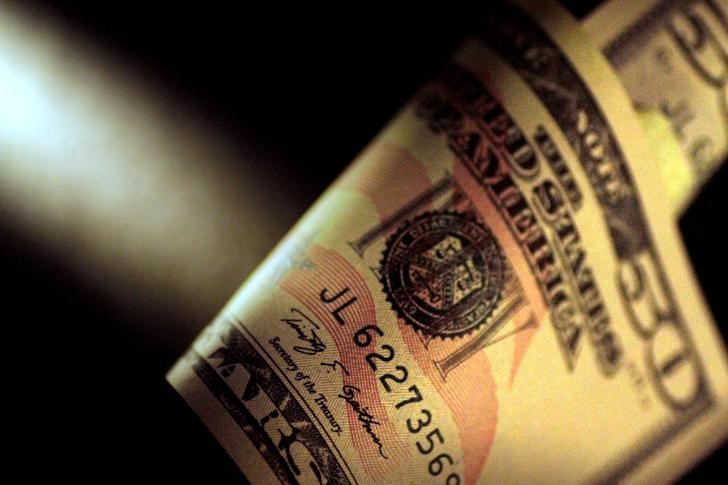 © Reuters.
© Reuters.
By Gina Lee
Investing.com – The dollar was down on Thursday morning in Asia, recording its sharpest fall in more than a month, as investors reacted to the U.S. Federal Reserve’s latest policy decision that put paid to the possibility of super-size hikes.
The U.S. Dollar Index that tracks the greenback against a basket of other currencies edged down 0.14% to 102.22 by 11:15 PM ET (3:15 AM GMT).
The USD/JPY pair inched up 0.03% to 129.12, with Japanese markets closed for a holiday. However, the yen was able to fight its way back to the stronger side of 130 per dollar for the first time in a week.
The AUD/USD pair was down 0.21% to 0.7247 while the NZD/USD pair edged up 0.11% to 0.6550.
The USD/CNY pair was steady at 6.6085, with Chinese data showing that the Caixin services purchasing managers index was 36.2 in April 2022 after markets re-opened after a holiday.
The GBP/USD pair edged down 0.13% to 1.2064, and swaps markets are fully pricing a 25 basis-points hike from the Bank of England later in the day.
The U.S dollar index fell from a five-year high after the Federal Open Market Committee hiked its interest rate to 1% in its policy decision handed down on Wednesday. The Fed hike was the largest since 2000, but Fed Chairman Jerome Powell said at the press conference afterward that the central banks are not currently considering 75-basis-point moves in the future.
Fed funds futures rallied, which took some of the edge from investors' aggressive outlook on U.S. rates. However, a further 200 bps of hikes remains priced in for the rest of 2022.
"The Fed simply could not, or, better, would not, hurdle the hawkish bar that the market had set," NatWest Markets head of G10 foreign exchange strategy Brian Daingerfield said in a note.
"I don't think it's hyperbole to say that today represented the first 'dovish' surprise by the Fed relative to market expectations in over six months."
The riskier Antipodean currencies surged, with the Australian dollar recording its biggest one-day percentage gain since late 2011. Investors revised bets on the Fed staying ahead of the Reserve Bank of Australia, which hiked its interest rate to 0.35% on Tuesday.
Australian data released earlier in the day also showed that building approvals contracted 18.5% month-on-month in March 2022, exports grew 0%, imports contracted 5% month-on-month, and the trade balance stood at AUD9.314 billion ($6.66 billion).
On the other side of the Tasman Sea, the New Zealand dollar jumped 1.7%, its largest one-day rise in two years.
The dollar's losses also gave cryptocurrencies a boost. Bitcoin had its best day in more than five weeks, climbing 5% to remain just below the $40,000 mark.

